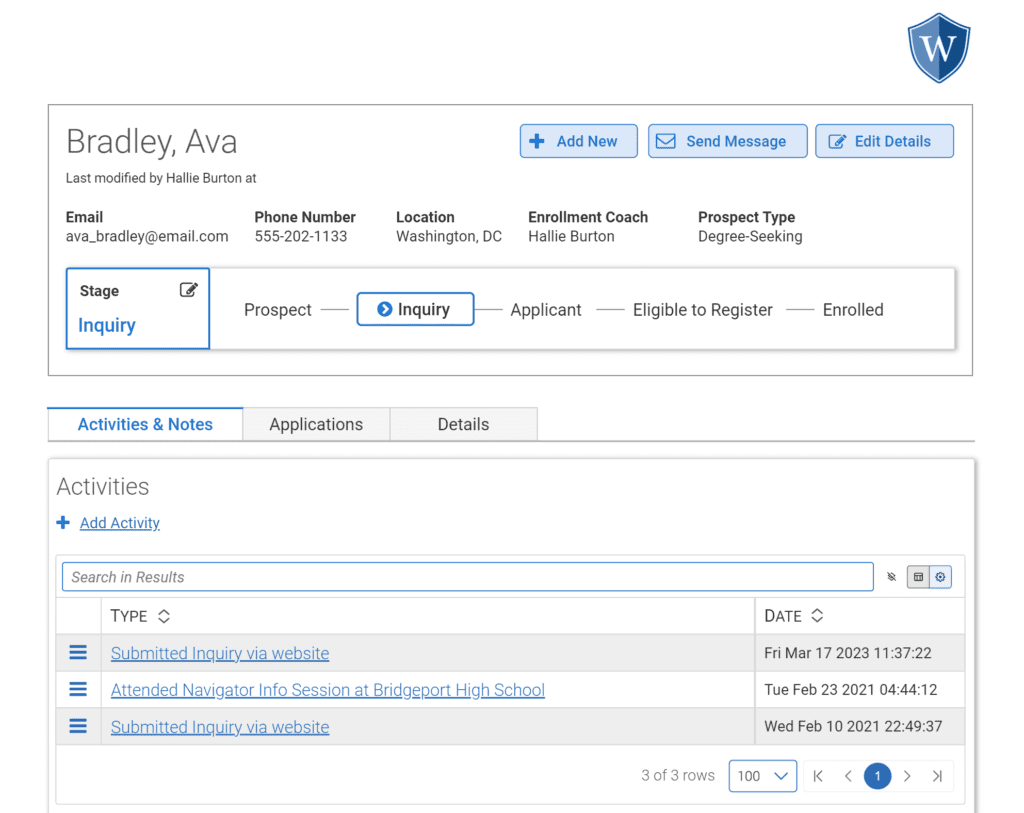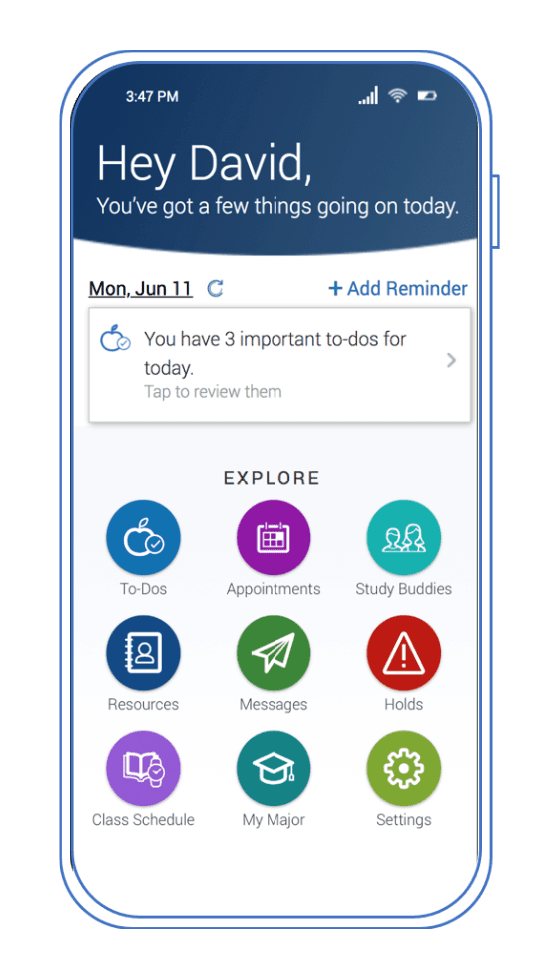The 4 stages of an integrated lifecycle approach for community college student success
April 14, 2023, By Tara Zirkel, Director, Strategic Research
There is encouraging data showing that six-year completion rates have been rising across all community colleges, with a .9% increase in six-year completion rates for students who started in fall 2015 compared to fall 2016. Even more impressively, there has been a 4% improvement in completion rates when compared to the fall 2008 cohort. While this is worth celebrating, it’s also important to look at short-term retention rates to understand who is leaving community colleges early on. Even though completion rates have improved, one-year retention rates have remained relatively flat for the past decade, with a 51.3% rate for students starting in fall 2009, compared to 52.4% for students starting in fall 2020. This indicates that community colleges are still seeing significant retention problems for students who are earlier in their programs.
Building an integrated student lifecycle approach, from first point of contact with a prospect through successful completion, is key to setting students up for success at every stage and to making the most effective use of your team’s time. EAB has spent the better part of a decade developing Navigate360 – a technology designed to support students at every community college each milestone, especially during that critical recruitment and onboarding process.
The 4 stages of an integrated lifecycle approach to success
1. Recruitment
One thing is clear—the shrinking birth rate, declines in young adult enrollment, and growing skepticism of higher education makes each interaction with a prospective student more important than ever.
Unfortunately, many community colleges struggle to keep up with high volumes of inquiries, especially if they are streaming in from multiple sources. Additionally, community colleges may struggle to follow up with inquiries and prospective students quickly, which slows momentum towards applying.
One study has shown that 14% of email inquiries to community colleges receive no follow up at all, and 28% of responses took more than a day. The same study showed that 17% of web inquiries received no response, and 21% of responses took more than a day. This potentially represents thousands of interested students who are falling between the cracks due to gaps in recruitment strategy.
Navigate360’s new Recruitment Success module takes the best parts of conventional CRMs—like individual and scalable email communications, event tracking, and funnel engagement data—and merges it with Navigate360’s proven student-centered framework. By stripping away the bulkiness of CRMs that weren’t designed for community colleges, teams can work faster to engage more students.

Learn More About the Recruitment Module
2. Onboarding
Interviews with EAB partners show that, on average, only 40% of community college applicants enroll. Students cite, in part, confusion during the onboarding process, coupled with difficulty in receiving guidance from the college as a barrier to their enrollment. Creating robust self-service tools that are combined with strategic 1:1 supports can simplify the onboarding process.
One way to keep applicants engaged is by providing proactive, consistent, customized guidance about each onboarding task in a format that is responsive and accessible. Traditionally, many community colleges communicate this “to do” list via email, or even in paper mail, which not only creates a slow and static experience, but one that can have errors because information is out of date by the time the student receives it.
Navigate360’s Milestone Guidance (right) helps create interactive checklists that students can access anytime from a mobile app, to meet them on their terms. This app connects to data housed in Navigate360 and your SIS, so students always have the most accurate information on where they are in their enrollment journey. Additionally, nudges help applicants stay on track by sending reminders to complete important onboarding tasks.
Check Out These Institutions’ Success Stories
3. Retention
Nationally, one-year retention rates at community colleges have been flat for over a decade, showing that there is a lot of opportunity to improve early outcomes. One strategy to increase retention are early interventions that immediately respond to risks like slipping grades, decreased attendance, or personal barriers.
Navigate360’s best in-class technology can help streamline retention initiatives via:
- Early alerts: allows faculty members to easily elevate concerns about students to advisors, tutors, and other campus supports in a single system where everyone involved with the student can see the intervention and the outcomes.
- Campaigns: powerful communications tools for high volume outreach, like messaging students who need to complete their FAFSA, or students who could benefit from tutoring. You can customize campaigns and segment them to contact specific cohorts, allowing you and your team to be more strategic in outreach efforts.
- Appointment scheduling: displays advisor availability and allows students to schedule appointments right from their mobile app.
- Coordinated care network: easily shows student who is in their assigned “care team” and how to reach them.

4. Completion
Retention is only one piece of the puzzle—it’s critical to help students keep their continued momentum to complete their programs, including taking the correct courses, applying for graduation, remembering to register, and satisfying all the requirements of their program.
Navigate360 can help keep students on track for completion by providing a shared workspace where students can build their academic plan into future semesters with dynamic, Guided Pathways-based program templates created by their advisor. This proactive versus reactive approach allows students to build a schedule that keeps them on track for graduation while working around their life obligations. Navigate360’s one-click registration feature makes it easy for students to accept their plan each term and stay on the path to completion.
Faced with several years of stagnant persistence and completion rates, York Tech undertook a large-scale approach to improving student success utilizing a Guided Pathways framework. They focused on addressing their fragmented onboarding process and inconsistent advising experience that failed to provide adequate support to undecided students, a population with higher attrition.
Students who used Navigate360’s Academic Planning tool were more than twice as likely to reenroll from semester to semester, keeping their momentum towards graduation moving.

The implementation of various improvement efforts to onboarding, major exploration and pathways, in conjunction with Academic Planning and other initiatives contributed to a 4.4% increase in the overall graduation rate across two years, as well as $1.39M in preserved tuition revenue.
In conclusion
-
3.5%
Typical graduation rate improvement for Navigate360 community college partners
Student success is a day-by-day journey that takes coordinated communication, integrated support, and thoughtful interventions at each stage of the student lifecycle. The most efficient way to implement this approach is with a single system to unify your recruitment, retention, and completion efforts.
Ready to find out more?
Use the form below to talk with an expert about how Navigate360 can support your learners across the full lifecycle and streamline time-consuming work processes for your staff.

More Blogs

Our New Staffing Model Playbook for Higher Ed CMOs

4 reasons your university should invest in a permanent process improvement team—and how to maximize its impact

